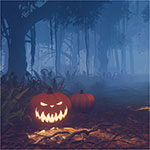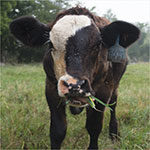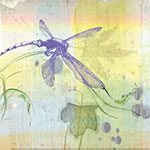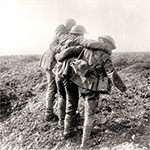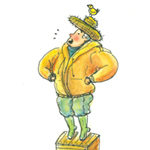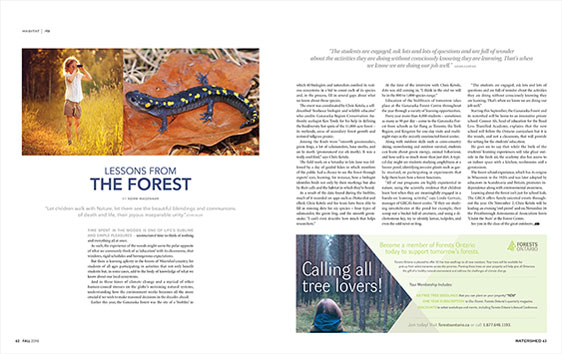
“Let children walk with Nature, let them see the beautiful blendings and communions of death and life, their joyous inseparable unity.”
JOHN MUIR
TIME SPENT IN THE WOODS IS ONE OF LIFE’S SUBLIME AND SIMPLE PLEASURES – unstructured time to think of nothing and everything all at once.
As such, the experience of the woods might seem the polar opposite of what we commonly think of as ‘education’ with its classrooms, shut windows, rigid schedules and homogenous expectations.
But there is learning aplenty in the forests of Watershed country, for students of all ages participating in activities that not only benefit students but, in some cases, add to the body of knowledge of what we know about our local ecosystems.
And in these times of climate change and a myriad of other human-caused stresses on the globe’s sustaining natural systems, understanding how the environment works becomes all the more crucial if we wish to make reasoned decisions in the decades ahead.
Earlier this year, the Ganaraska Forest was the site of a ‘bioblitz’ in which 40 biologists and naturalists combed its various ecosystems in a bid to count each of its species and, in the process, fill in several gaps about what we know about those species.
The event was coordinated by Chris Ketola, a self-described ‘freelance biologist and wildlife educator’ who credits Ganaraska Region Conservation Authority ecologist Ken Towle for his help in defining the biodiversity hot spots of the 11,000-acre forest – its wetlands, areas of secondary forest growth and restored tallgrass prairie.
Among the finds were “smooth greensnakes, green frogs, a lot of salamanders, luna moths, and an Io moth (pronounced eye oh moth). It was a really cool find,” says Chris Ketola.
The field work on a Saturday in late June was followed by a day of guided hikes in which members of the public had a chance to see the forest through experts’ eyes, learning, for instance, how a biologist identifies birds not only by their markings but also by their calls and the habitat in which they’re heard.
As a result of the data found during the bioblitz, much of it recorded on apps such as iNaturalist and eBird, Chris Ketola and his team have been able to fill in missing data for six species – four types of salamander, the green frog, and the smooth greensnake. “I can’t even describe how much that helps researchers.”
At the time of the interview with Chris Ketola, data was still coming in. “I think in the end we will be in the 800 to 1,000 species range.”
Education of the bioblitzers of tomorrow takes place at the Ganaraska Forest Centre throughout the year through a variety of learning opportunities.
Every year more than 8,000 students – sometimes as many as 90 per day – come to the Ganaraska Forest from schools as far flung as Toronto, the York Region, and Kingston for one-day visits and multinight stays in the recently constructed forest centre.
Along with outdoor skills such as cross-country skiing, snowshoeing and outdoor survival, students can learn about green energy, animal behaviour, and how soil is so much more than just dirt. A typical day might see students studying amphibians at a beaver pond, identifying invasive plants such as garlic mustard, or participating in experiments that help them learn how a forest functions.
“All of our programs are highly experiential in nature, using the scientific evidence that children learn best when they are meaningfully engaged in a hands-on learning activity,” says Linda Gervais, manager of GRCA’s forest centre. “If they are studying invertebrates at the pond for example, they scoop out a bucket full of creatures, and using a dichotomous key, try to identify larvae, tadpoles, and even the odd newt or frog.
“The students are engaged, ask lots and lots of questions and are full of wonder about the activities they are doing without consciously knowing they are learning. That’s when we know we are doing our job well.”
Starting this September, the Ganaraska Forest and its watershed will be home to an innovative private school. Connor Als, head of education for the Road Less Travelled Academy, explains that the new school will follow the Ontario curriculum but it is the woods, and not a classroom, that will provide the setting for the students’ education.
He goes on to say that while the bulk of the students’ learning experiences will take place outside in the fresh air, the academy also has access to an indoor space with a kitchen, washrooms and a gymnasium.
The forest school experience, which has its origins in Wisconsin in the 1920s and was later adopted by educators in Scandinavia and Britain, promotes independence along with environmental awareness.
Learning about the forest isn’t just for school kids. The GRCA offers family-oriented events throughout the year. On November 2, Chris Ketola will be leading an evening ‘owl prowl’ and on November 16 the Peterborough Astronomical Association hosts ‘Under the Stars’ at the Forest Centre.
See you in the class of the great outdoors.
Story by:
Norm Wagenaar
